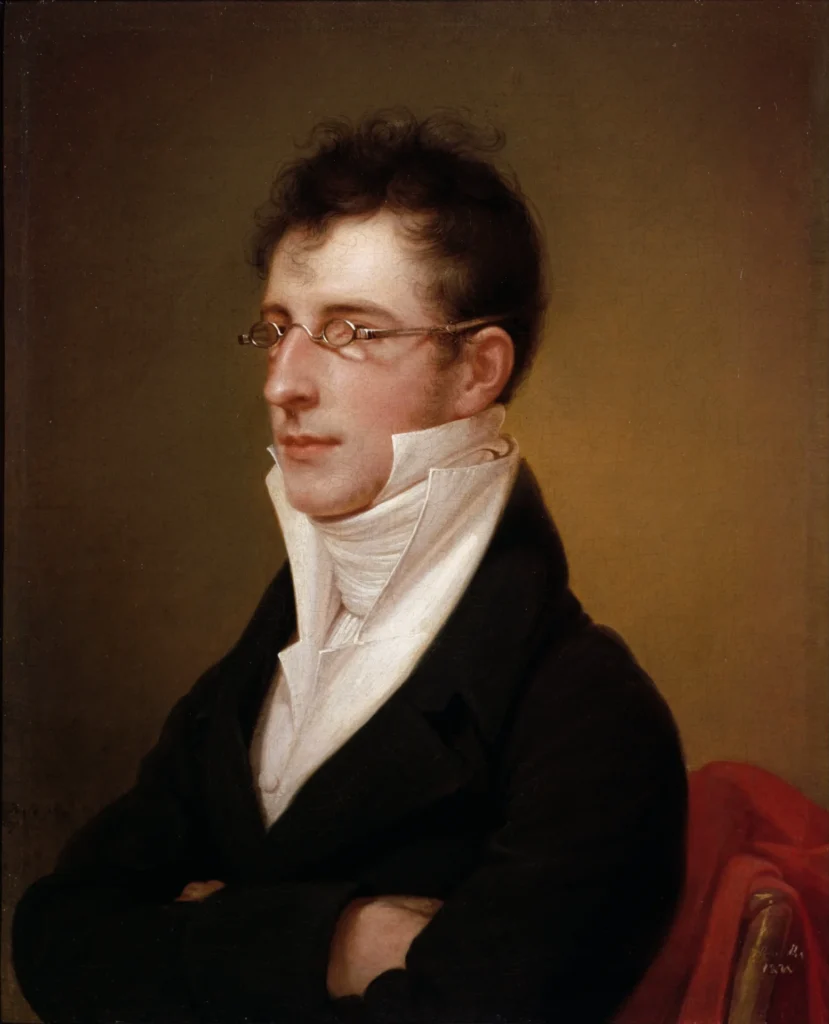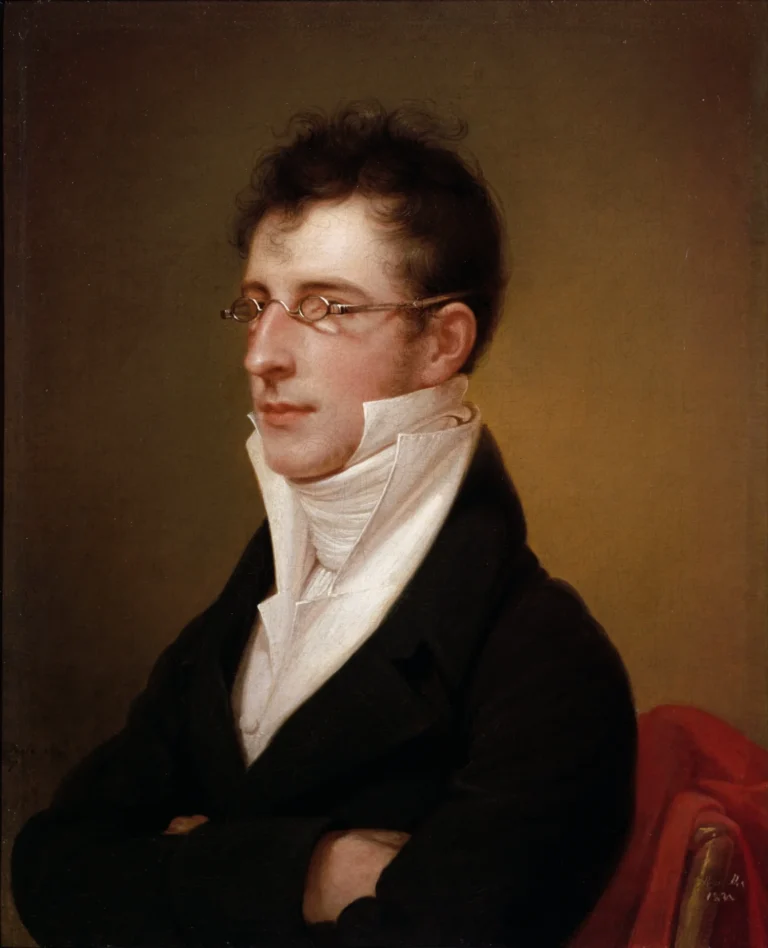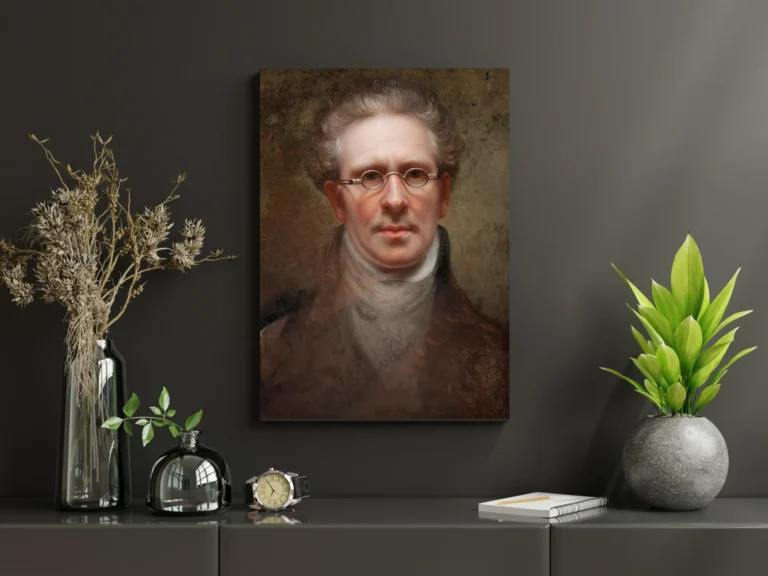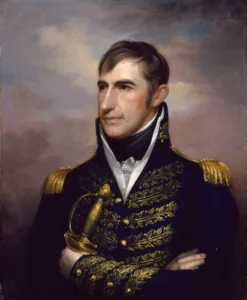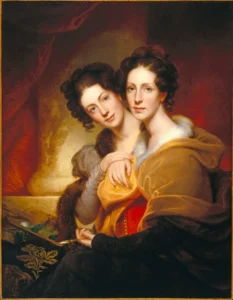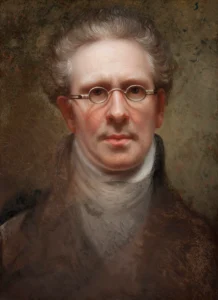Portrait of Rubens Peale
Created in 1801 by Rembrandt Peale, 'Rubens Peale with a Geranium' is a notable portrait showcasing Rubens Peale, who was also a botanist and the brother of the artist. The incorporation of a geranium—believed to be the first of its kind in the New World—adds depth to the painting, intertwining personal achievement with artistic brilliance. Peale’s mature style is characterized by a naturalistic portrayal, meticulous color modulation, and an engaging interplay of light, enhancing the visual impact of the work.
Year 1801
About the Artwork
The story of 'Rubens Peale with a Geranium' unfolds around the Peale family, known for their deep ties to both the art and scientific communities in early America. Rubens Peale was a pioneering botanist, and his dedication to horticulture is immortalized in this portrait, where he is depicted with a rare geranium plant that symbolizes his achievement in cultivating exotic flora. As the painting transitioned through generations of the Peale family before finding a permanent home in the National Gallery of Art, it has resonated with audiences through its historical context and artistic finesse, reflecting the spirit of enlightenment and discovery of the period.
Did You Know
The geranium featured in the portrait is believed to be the first specimen of its kind grown in the New World, symbolizing Rubens Peale’s unique achievement in horticulture.
Rembrandt Peale was part of the illustrious Peale family, renowned in American history for their contributions to both fine arts and sciences, significantly influencing the cultural landscape of the time.
Since its creation, ‘Rubens Peale with a Geranium’ has been featured in important exhibitions, including themes focusing on American art and the legacy of the Peale family through art, science, and education.




